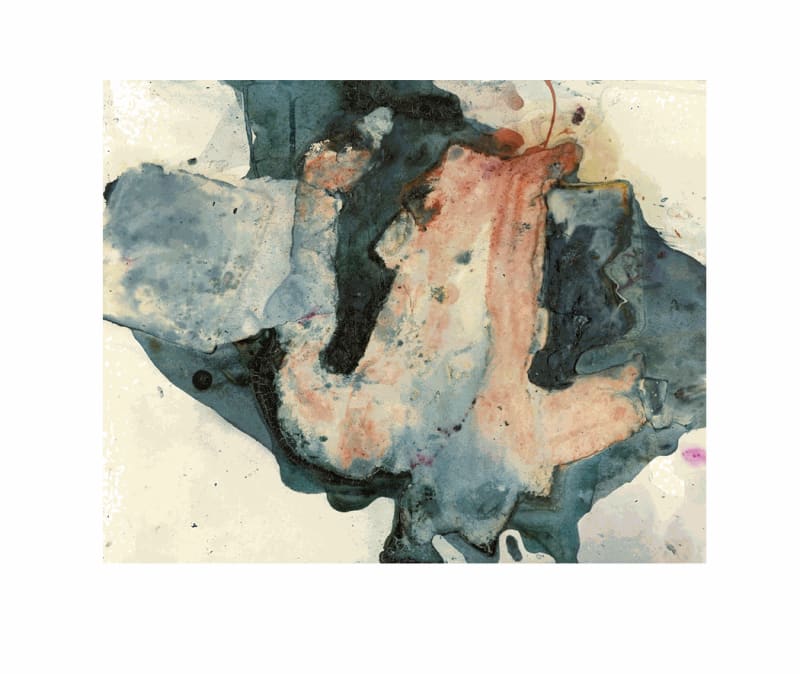I never want to see another camera-less photograph.
Along with renewed interest in historical alternative processes, the burgeoning digital age has inspired a wave of artists to return to pure experimentation with traditional darkroom materials. Many of these artists are eschewing the camera altogether and working directly with chemistry, light and paper to startling and innovative effect. While the purist in me is thrilled, I’ve seen so many iterations of the photogram, chemograms, luminograms and every variation thereof, that I’m beginning to question how much of this work has staying power and what is mere visual trickery and trend-fueled gimmick.
Arden Surdam has created a series of images that defy categorization and break new ground in terms of her inventive use of photochemistry. Each work is produced by combining historically significant light sensitive photo chemicals like cyanotype, gum bichromate, inkodye, and deliciously saturated photo oils in sapphire or fire opal with food matter ranging from bacon and muenster cheese, to sardines, egg whites and pasta. These concoctions are mixed onto thick, handmade Japanese paper which the artist puts into an outdoor All-American Sun Oven. The oven consists of a glass covered chamber, folding aluminum reflectors that catch and direct sunlight, and a focusing cube with two holes that looks curiously like a camera. During long exposure times that can last hours, days or even weeks, Surdam presides over the chemical reactions between the food molecules and photo-chemicals in the oven, waiting patiently for the right balance of elements to appear.
Like many of her contemporaries in the camera-less genre, Surdam uses her materials to painterly effect, relying partially on control and experience with her chosen materials, while allowing for expressive surprises in composition and palette. Once she feels her “images” are fully “developed” Surdam scans her food and chemical-laden originals and enlarges them to approximately human scale. The final prints are sensual abstractions, rich in color and texture. But unlike much camera-less photography, which is often the sum of purely formal concerns, Surdam draws upon memories of her adolescence to give her work an endearing biographical slant. The edible ingredients she includes in each of her pieces comes from the simple meals prepared by her working mom while she was growing up on the East Coast, so that elements like toast, cheese, seafood, eggs and dijon mustard act not only as the raw material for the work, they are symbolic of the artist’s personal history.
Surdam’s work tests the boundaries of what we consider a photographic process—she certainly defies the conventional use of photo-chemicals. But in her exploration of the medium she has discovered new territory and has mastered it, and for this reason, she is an exceptional and successful rule-breaker.
